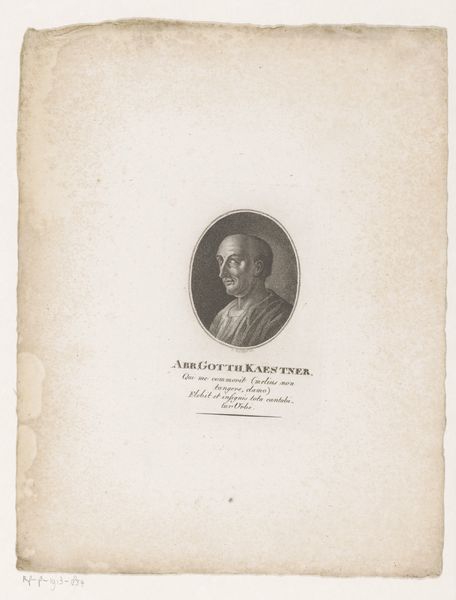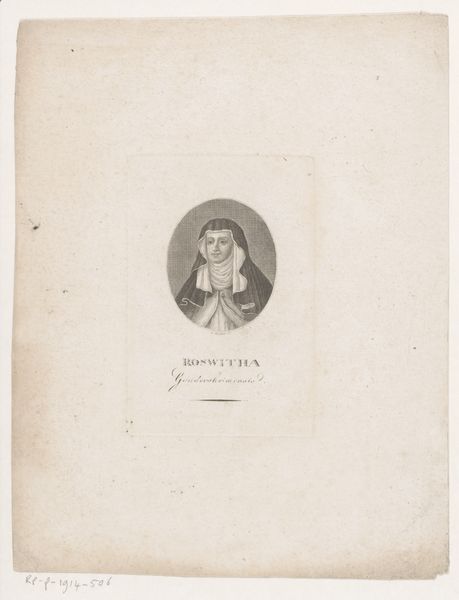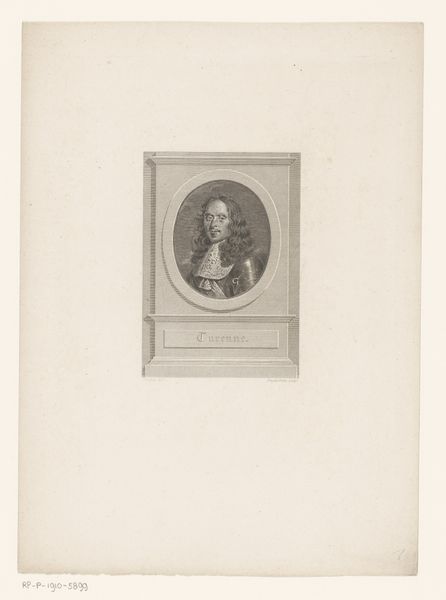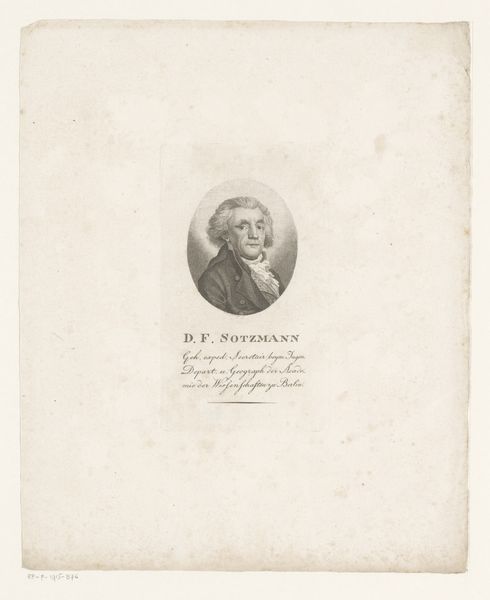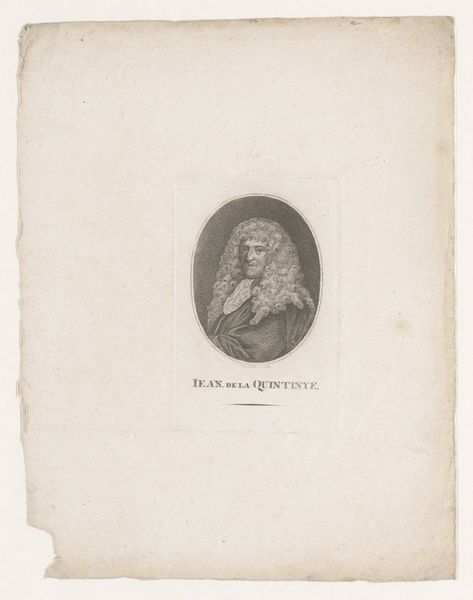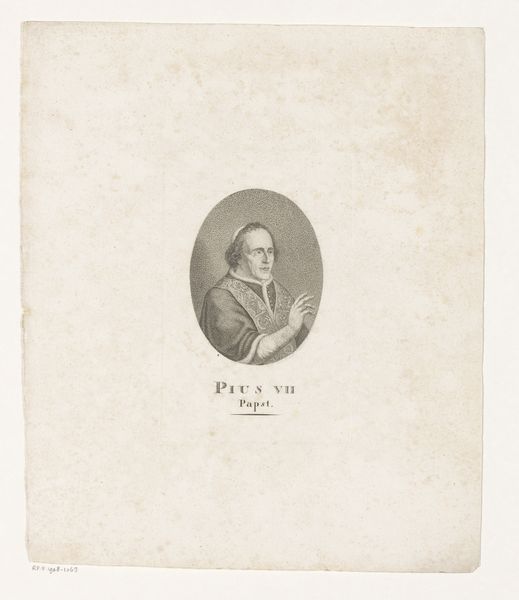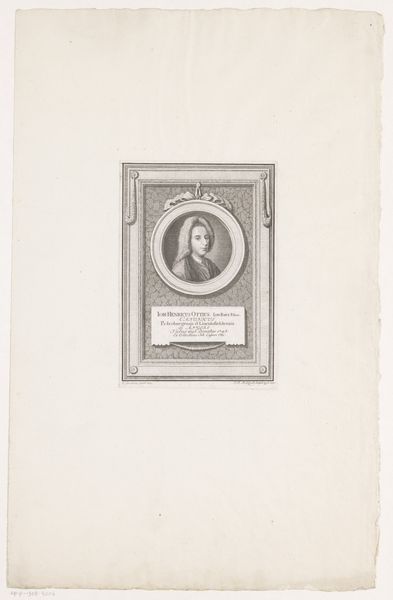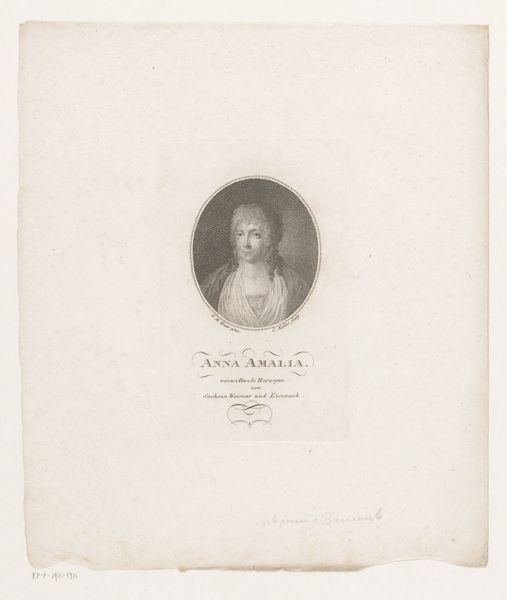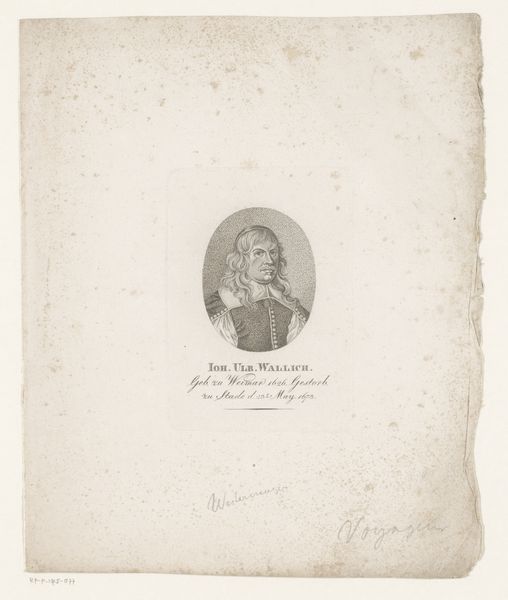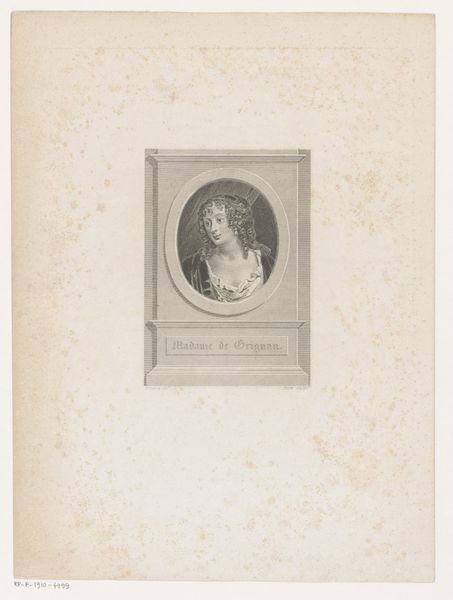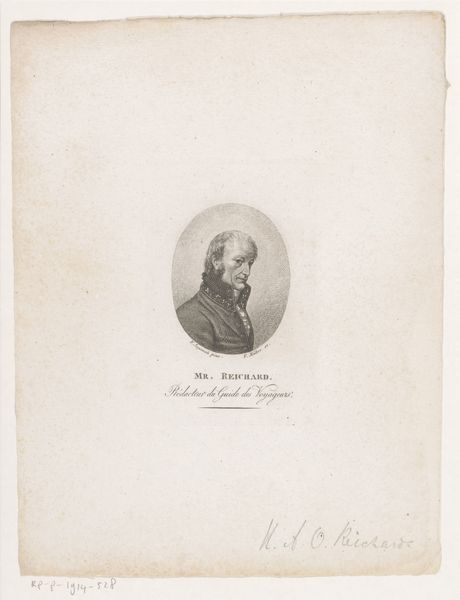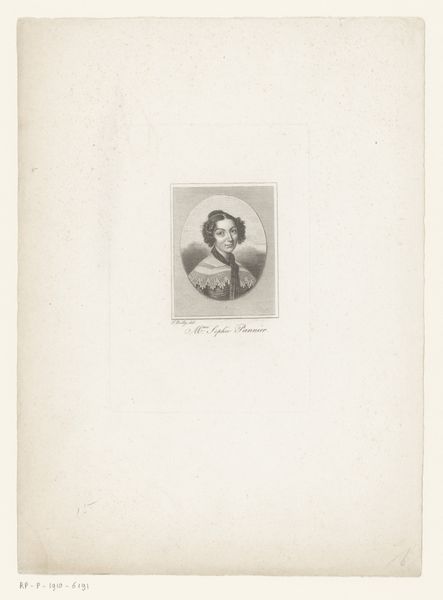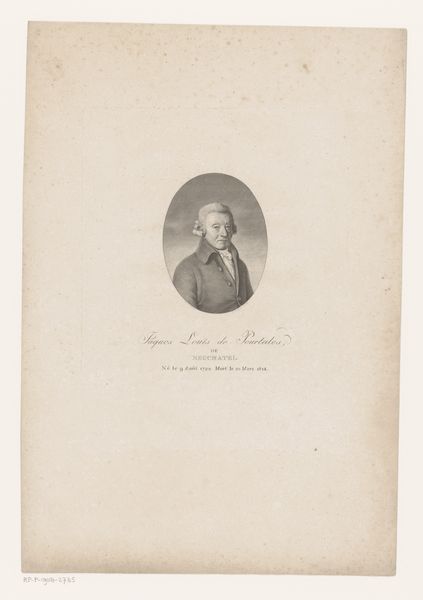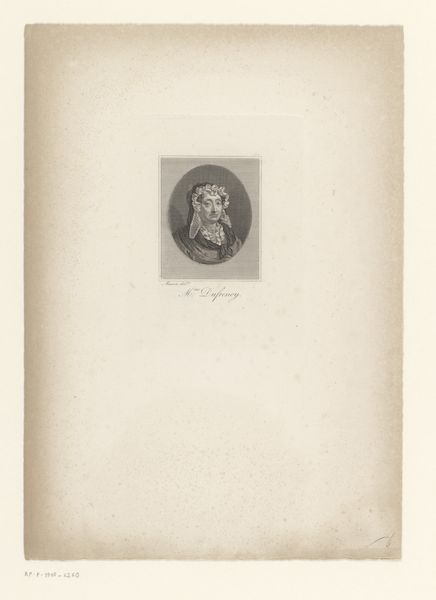
print, engraving
#
portrait
#
aged paper
# print
#
old engraving style
#
white palette
#
watercolour illustration
#
history-painting
#
engraving
Dimensions: height 139 mm, width 85 mm
Copyright: Rijks Museum: Open Domain
Johann Christian Ernst Müller created this print of Georg Andreas Agricola, but the date remains unknown. Considered within its cultural and historical context, the portrait gives a sense of the institutions of power at the time. In the German lands of the 18th century, the elaborate wig and formal attire would signal Agricola's status as a man of prominence, likely tied to the court or other forms of social elite. But the portrait doesn't just reflect social status; it also reinforces it. By commissioning and circulating images like these, elites were able to promote an image of themselves and their values. This print would have been part of a broader visual culture through which social hierarchies were reinforced. To fully understand the significance of this image, we would need to delve into archival records to understand the context of its commissioning, production, and distribution. These details remind us that the meaning of art is always contingent on the social and institutional context in which it is made and received.
Comments
No comments
Be the first to comment and join the conversation on the ultimate creative platform.
